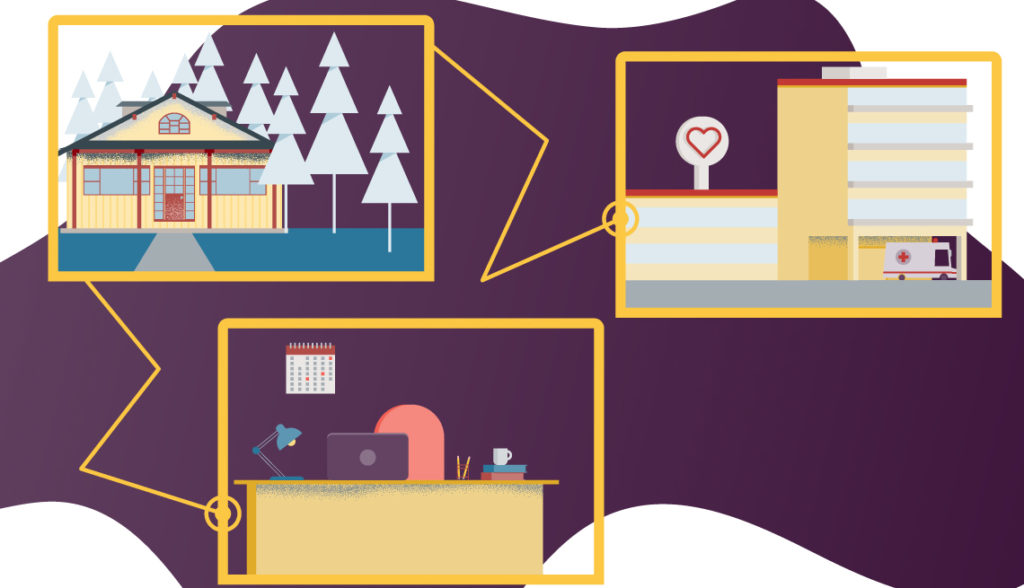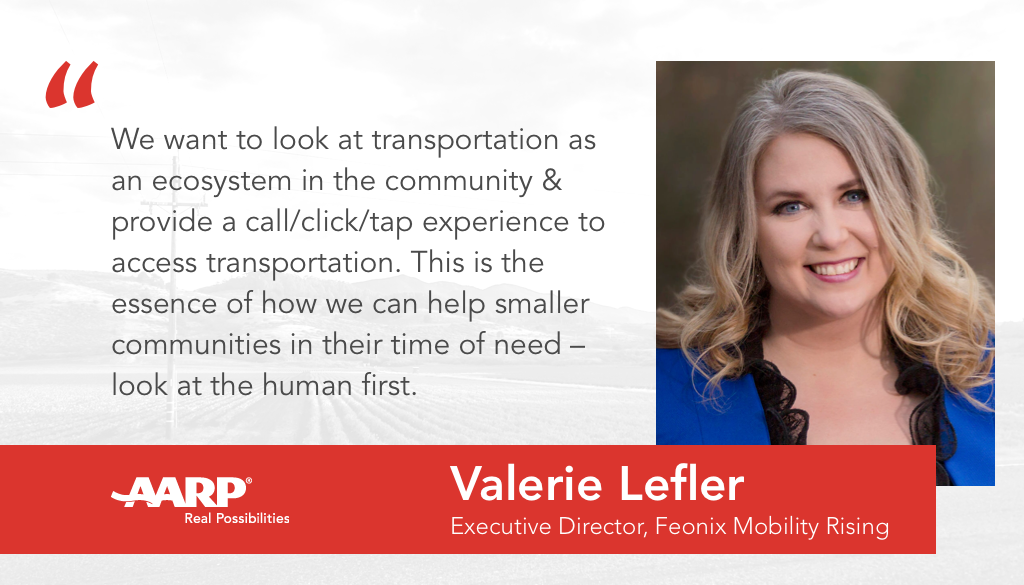AARP Eye Center
Stranded: Bridging the Transportation Gap for Rural Communities
By Valerie Lefler, Feonix - Mobility Rising, March 11, 2019 08:01 AM

While innovations in transportation tend to be viewed as a trend unique to urban communities and settings, new technologies are now enabling service providers to capitalize on a previously untapped market: rural communities. With a unique set of challenges and opportunities—and enabled by today’s technology—these rural markets allow transportation service providers to rethink the kinds of services they provide, how to scale those services, and how to make them more accessible. That movement toward innovation in rural markets needs to grow.
The nonprofit I lead, Feonix – Mobility Rising, works to accelerate the move toward accessible transportation. We do so by advocating and striving for advanced mobility options across America and by fostering multipartner collaboration and tapping technology already in use in the transportation sector. We are working to provide an important solution. To be sure, overcoming challenges associated with rural transportation is crucial—crucial, in fact, to the very health and well-being of tens of millions of people.
The Rural Challenge of Getting Around
In rural communities, the individuals most in need are often those who don’t own or operate a personal vehicle. These populations might include people with disabilities, older Americans, or lower-income residents. Providing mobility in these areas is particularly important to ensure access to a wide variety of necessary services.
Access to health services is among the most important considerations for rural transportation. For those without access to a personal vehicle, traveling from their home to a doctor or health care facility can be time consuming, expensive, and sometimes altogether impossible—as it can require several smaller trips across multiple types of transportation and different jurisdictions (municipal, county, or state).
Most transportation options require advance notice and thorough planning to ensure each leg of the journey properly connects—often forcing residents to schedule even major medical procedures based on fixed-transit schedules or, worse, allowing for little room for flexibility in the event a sudden health issue arises.
The need for better medical transportation hasn’t gone unnoticed by some of the larger transportation service providers; specifically, both Uber and Lyft have made significant advancements in the health transportation market during recent years. Still, in communities without access to those large ride-hailing companies, residents need alternatives.

Moving toward Solutions
The future of transportation, particularly in rural areas, must embrace an essentially human-first model. Providing transportation access to vulnerable populations in rural areas requires moving beyond a narrow focus on profitability or ridership. That, however, doesn’t mean abandoning private, for-profit options altogether. Small business is essential for our thriving rural communities and partnerships are needed not only with public transit and social service agencies but also taxi companies to fill in the gaps. In rural communities, what moves innovation forward is not data, the press, or high-tech buzz words, it’s families, faith, and doing the right thing.
At Feonix – Mobility Rising, we coordinate with community partners to provide transportation services to vulnerable populations through smartphone apps and computer platforms, with additional support by phone. Through partnerships with the public and private sectors, as well as with nonprofit and for-profit organizations, Feonix is leveraging technology to fill transportation gaps in rural communities. For example, in Missouri we have an established partnership with HealthTran, a program of the Missouri Rural Health Association. To date, in three communities across the state, Federally Qualified Health Center staff are able to use a computer platform to book rides for their patients in seconds.
One of the major benefits is that nurses and social workers can compare, coordinate, and book rides directly with the local public transit, taxi providers, and volunteer drivers who are connected via the app like ride-hail drivers. Time spent helping patients get to their appointments went from as much as an hour or more to less than a minute. This not only saves valuable time for staff but also reduces no-show appointments and improves health outcomes.
An additional benefit of technology-focused solutions is the ability to use shared data to create demand and market efficiencies; for example, the kinds of algorithms that Lyft and Uber use for ride-hailing in large cities can be used on a smaller scale in rural communities to expand rural public transit and coordinate rides for volunteer drivers. This allows a more cost-effective, shared-travel option for multiple people traveling to the same place.
Rather than viewing rural communities as unsuitable for transportation innovations, leaders in the transportation space should focus on leveraging technology to turn the unique challenges of rural transportation into lucrative—and life-saving—opportunities.
Valerie Lefler is the founder and executive director of Feonix – Mobility Rising, a nonprofit organization dedicated to serving vulnerable and underserved communities through transportation innovation. Valerie was a panelist at the AARP Public Policy Institute Future of Transportation Solutions Forum and is a guest blogger for this series. Views in this blog do not necessarily reflect those of AARP or the AARP Public Policy Institute.
You may also be interested in other blogs in this AARP Public Policy Institute Future of Transportation series:
- Bringing the Convenience of Expedia to Paratransit
- The Original Rideshare: Public Transit in the Era of Uber
- It's Not Your Granddaughter's Ride-Hail
- The Devil is in the Details: Securely Sharing Transportation Data
- Demand-Driven Transportation: How Public and Private Competition Benefits Everyone
- A New Vision for Person-Centered Transportation
- How to Harness Tech Disruption to Create the Transportation System We Want































































